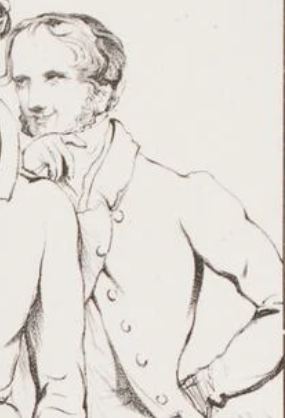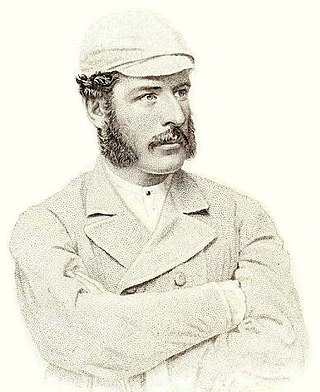Gentlemen v Players was a long-running series of cricket matches that began in July 1806 and was abolished in January 1963. It was a match between a team consisting of amateurs and a team consisting of professionals that reflected the English class structure of the 19th century. Typically, the professionals were working class people who earned their living by playing cricket, while the amateurs were middle- and upper-class products of the public school system, who were supposedly unpaid for playing. The professionals were paid wages by their county clubs and/or fees by match organisers, while the amateurs claimed expenses. However, while rules to distinguish amateurs from professionals were established by Marylebone Cricket Club (MCC), the system of allowable expenses was both controversial and complex, enabling some leading amateurs to be paid more than any professional for playing cricket.

William "Silver Billy" Beldham was an English professional cricketer who played for numerous teams between 1782 and 1821. He was born at Wrecclesham, near Farnham in Surrey, and died at Tilford, Surrey. In some sources, his name has been given as "Beldam" or "Beldum". A right-handed batting all-rounder, he is widely recognised as one of the greatest batsmen of cricket's underarm era. Using an underarm action, he bowled pitched deliveries at a fast medium pace. He generally fielded in close catching positions, mostly at slip and sometimes played as wicket-keeper.

Charles Gordon, 10th Marquess of Huntly, styled Lord Strathavon from 1794 to 1836 and Earl of Aboyne from 1836 to 1853, was a Scottish peer, politician, courtier, and cricketer. He was a Member of Parliament, first as a Tory (1818–1830) and then a Whig.
John Nyren was an English cricketer and author. Nyren made 16 known appearances in first-class cricket from 1787 to 1817. He achieved lasting fame as the author of The Cricketers of My Time, which was first published in 1832 as a serial in a periodical called The Town and was then included in The Young Cricketer's Tutor, published in 1833 by Effingham Wilson of London. Nyren's collaborator in the work was Charles Cowden Clarke.

William Lambert was an English professional cricketer who played for numerous teams between 1801 and 1817. He was born at Burstow in Surrey, and died at Nutfield, Surrey. A right-handed batting all-rounder, he is widely recognised as one of the greatest batters of cricket's underarm era. Using an underarm action, he bowled pitched deliveries at a slow pace. He generally fielded in close catching positions, mostly at slip and often played as wicket-keeper.
1962 was the 63rd season of County Championship cricket in England.
1806 was the 20th season of cricket in England since the foundation of Marylebone Cricket Club (MCC). The first two Gentlemen v Players matches took place, but the fixture was not played again until 1819.

William Yardley was an English cricketer who played first-class cricket for Kent County Cricket Club from 1868 to 1878 and for Cambridge University from 1869 to 1872. In the early 1870s, only WG Grace was reckoned his superior amongst amateur batsmen. Yardley was also an actor, playwright and drama critic.
Cricket, and hence English amateur cricket, probably began in England during the medieval period but the earliest known reference concerns the game being played c.1550 by children on a plot of land at the Royal Grammar School, Guildford, Surrey. It is generally believed that cricket was originally a children's game as it is not until the beginning of the 17th century that reports can be found of adult participation.
John Pontifex was an English amateur cricketer who made 11 appearances in first-class cricket matches from 1804 to 1810. He was a member of the Marylebone Cricket Club (MCC) and played for the Gentlemen in the first two Gentlemen v Players matches in 1806.
John Deedes was an amateur English first-class cricketer.
Arthur William Ridley was an English first-class cricketer. Ridley was a right-handed batsman who bowled right-arm underarm medium pace. He also played occasionally as a wicket-keeper.
Amateur status had a special meaning in English cricket. The amateur in this context was not merely someone who played cricket in his spare time but a particular type of first-class cricketer who existed officially until 1962, when the distinction between amateurs and professionals was abolished and all first-class players became nominally professional.
The Gentlemen appeared in first-class cricket between 1806 and 1962, always in the showcase Gentlemen v Players matches against the Players. Teams called the Gentlemen have played in a few minor matches.
The Players appeared in first-class cricket between 1806 and 1962, nearly always in the showcase Gentlemen v Players matches against the Gentlemen, though Players teams have occasionally played against touring sides too. Teams called the Players have played in a few minor matches.
Alfred Smith was an English cricketer notable for his fourteen first-class cricket appearances for Sussex as a gentleman cricketer between 1841 and 1852.
Through the Napoleonic Wars, county cricket virtually died as cricket was impacted by losses of investment and manpower.
Lists of English cricketers include: